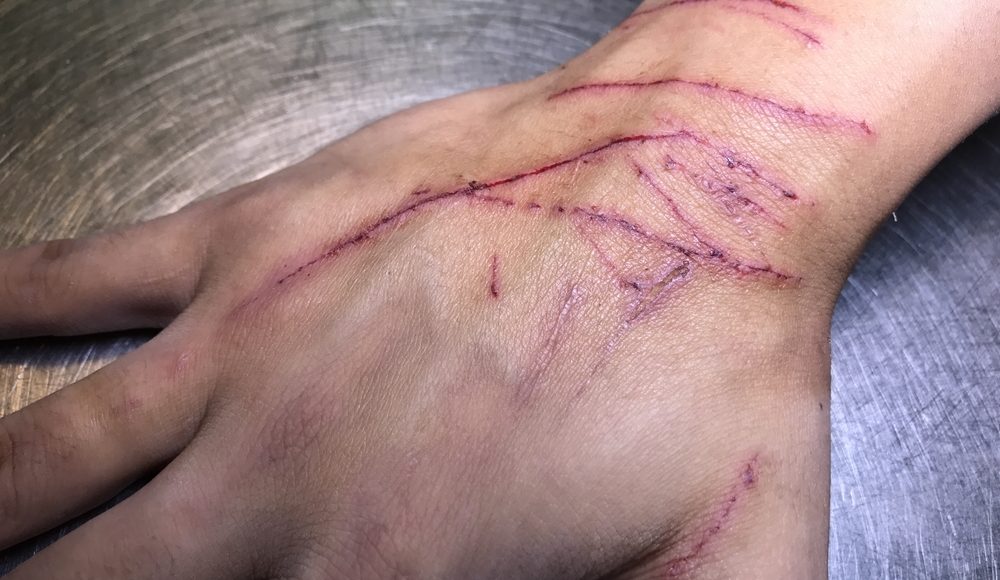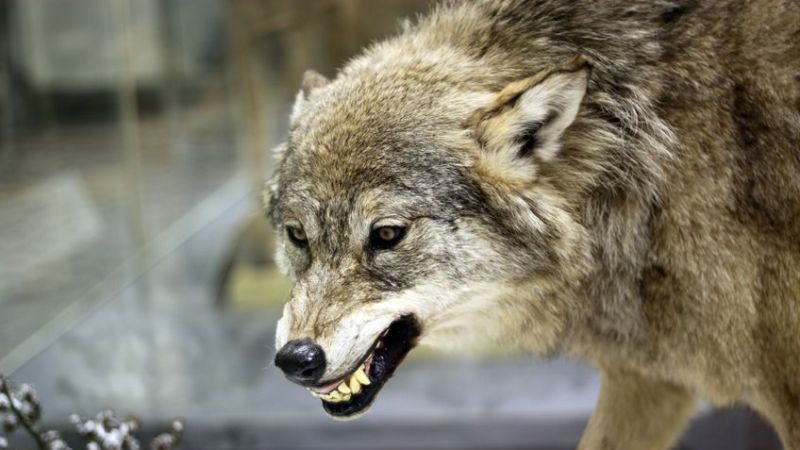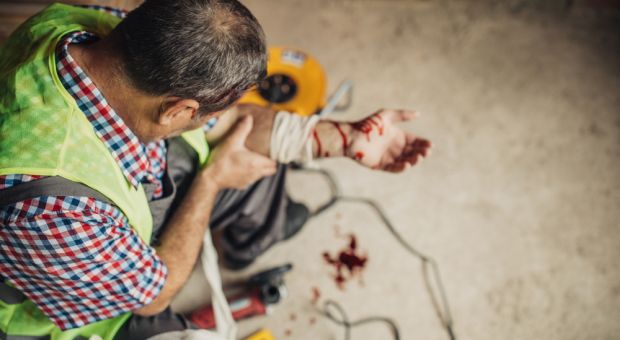Animals come in all “bites” and sizes, and even the friendly neighbor’s dog can harm you if provoked or if it feels under the weather.
Regardless you explore the great outdoors or visit the local park, an encounter with a four-legged creature can leave you with a nasty scar or worse.
Considering that the average human spends quite some time near various animals, especially dogs and cats, it pays knowing how to manage and treat animal bites. Even more, you should be able to prevent them from happening in the first place.
What’s my chance of getting bitten by an animal?
According to certain studies, the chance is pretty high, and luck doesn’t play in your favor. More than half of US residents will experience at least one animal bite in their lifetime. The numbers are in the millions, and it is no longer possible to keep accurate statistics of how many people get bitten by an animal every year. All this considering that many of these incidents go unreported and they do not require professional medical care.
More than one percent of the ER visits are related to some animal bite, and the most alarming fact is that 90 percent of those falling victim to animal bites ending up in the emergency room are children. Children often interact with various furry friends such as cats and dogs, and some of these encounters don’t end too well.
There is also a piece of good news, and that’s the fact that deaths attributed to animal bite are rare, and most encounters will leave you with a scar that makes a good party story. On the other hand, bleeding, pain, infection, and tissue damage, are pretty standard. In certain cases,
depending on the animal’s type and size, crush injuries can also occur.
Specific injuries require surgical repairs, but some of these injuries will also cause psychological trauma (especially in children) that may require a long recovery time.
Before we look at how we should treat animal bites and which culprits are causing such bites, I think it’s better to learn how to prevent ending up in that situation in the first place.
Tips to prevent animal bites
Animals have a distinctive behavior pattern, and most of them will give warning signs before attacking you. Since it is impossible to discuss animal behavior in a single article, the best course of action would be to keep your distance from unfamiliar domestic animals.
Staying away from wildlife is critical to your safety, and this should be common sense by now.
Since most animal bites come from your pets, it’s essential to learn how to handle them, and it becomes mandatory to discourage any form of aggressive play in the early months. When children are present, you should monitor their interaction with your pets at all times, if possible.
Handling wildlife encounters is a more complex subject, and different strategies can be applied depending on the animal finding its way in your path. Avoiding bear attacks is other than preventing a canine attack. For example, you should never look a member of the canine family in the eyes since maintaining eye contact may be a sign of confrontation. However, when you find yourself in the vicinity of a cougar, the contrary is recommended.
One strategy that applies to most, if not all, animal encounters is to restrain yourself from running away since this is nothing more than prey behavior. As such, it will almost instantly trigger a predatory response.
During your hiking trips, if you happen to end up in the path of a large carnivore, one smart thing to do is try to make yourself appear as large as possible. You can raise your backpack over your head, our you can do so with walking poles if available. In most cases, the animal will back away slowly, and you will avoid a terrible outcome.
Carrying defensive items is also recommended when exploring the great outdoors, so a can of bear spray or a pocket revolver should be considered if you traverse areas where large animals dwell. Also, there is safety in numbers, so look for company when traveling through unfamiliar terrain.
And for the love of God, put down the phone! That’s not the time to take pictures, and the animal in front of you may not like the idea of ending up on social media. I honestly believe that some people have lost their common sense and self-preservation spirit.
Encounters with fangs owners
Members of the Canine family
- Dog bites
Counting around 80 percent of all animal bites, injuries caused by dog bites won’t make the news unless a fatality is involved. After all, being bitten by the neighbor’s dog is not as sensational as being bitten by a wolf or a coyote.
However, the number of dog bites shouldn’t be ignored since around 30 to 40 cases each year end up being fatal encounters. The breeds that can cause serious injuries are Dobermans, Rottweilers, Pitbulls, and German shepherds. Your average adult dog has 42 teeth perfectly designed to rip and shred flesh that will often cause wide lacerations with flesh being torn off. Such wounds will get infected quickly if not treated properly.
- Coyote and wolf bites
Even if they are members of the same family, a few distinctive characteristics exist between a coyote and a wolf. Most probably, the animal you saw in your backyard at night was probably a coyote and not a wolf. You cannot compare these animals in terms of size, weight, and strength, even though, I’ll give you that, some coyotes can grow quite big.
When it comes to bite force, the wolf bites much harder, and its bite force was calculated to be twice the one of a German shepherd. After all, they can chew through the bones of large animals such as elk and moose.
Compared to that, the bite force of a coyote is similar to a medium-sized dog. Even if that is somehow good news, the less pleasant information is that coyotes have become more intrusive, and they have adapted much better to the civilized world than wolves. Even more, they will attack humans if the opportunity arises.
Members of the Feline family
Felines bites count for 10 to 15 percent of all animal bites each year, but some suggest the numbers might be much higher since most cases require little medical assistance or none at all. One problem regarding cat bites resides in Americans’ love for exotic cats such as Savannah or Bengal breeds. Hybrid breeds in these two categories can cause much more severe bites, and their owners end up in the ER.
The trauma of a cat bite is minor, and this leads to ignorance, but the puncture wound can be pretty deep, and it will get infected in around 50 percent of all bites. This is a high number considering that in the case of a dog bite, the number of infections occurs in less than 10 percent of all bites.
In case of a cat attack, besides the deep punctured wound that is often difficult to clean, you also have to worry about the scratches. Some of the injuries caused by their sharp claws will get infected, leading to a nasty case of cat scratch disease.
- Cougar and bobcats
Attacks caused by such big cats are rare, but they do occur, and fatalities can happen from time to time. Such an attack is not a pleasant experience considering that an animal bite coming from a big cat can cause deep laceration, broken bones, and crush damage.
These animals are shy by nature, and the attacks occur only during unexpected encounters when one of these felines ends up in your path by accident. In such cases, their claws can cause incredible damage, and it’s much more severe than those of domestic cats. If you spot a bobcat, cougar, or lynx on your hiking trail, keep your distance, and don’t wait around to see what the “beautiful cat” will do next.
- Bears
There are quite a few videos online of people that have encountered a bear during their hiking or hunting trips, and they are pretty self-explanatory when it comes to the damage such animals can do to the human body. A bear can cause great claw and bite wounds that have a devastating effect on your body. If the victim is lucky enough to survive, they will require intensive care, and extensive reparatory and cosmetic surgery procedures will be needed.
In North America, there are three species of bears that you should be aware of, the black bear, the brown bears (including the Grizzly), and the polar bear. The good news (if we can call it that) is that polar bears have the most powerful bite of all three species, and encounters with polar bears are pretty rare.
Even so, a bite from these animals is devastating and will leave you with broken bones, a significant loss of soft tissue, and severe bleeding.
This, once again, if you survive the encounter. Keep in mind that bears often show predatory behaviors towards humans, and they will attack if presented with the opportunity to do so.
- Rodents and other small animals
The Rodentia family contains mice, rats, squirrels, beavers, and many others. The distinctive characteristic of such animals is their pair of continuously growing incisors in the upper and lower jaws.
Their teeth are long and very sharp and can cause deep and painful wounds, but that’s only half of the problem. They can also transmit diseases such as rat-bite fever and tularemia.
Other small animals worth mentioning are foxes and raccoons since they can carry the rabies virus, and one bite from an infected animal may be fatal to humans. The rabies virus has a shocking effect on the human body, and if the infection is not spotted in time, there is no chance of recovery.
We also have to mention bats since these tiny creatures carry many diseases, and their bites will often go unnoticed. Some people say they are the culprits of the SARS Covid virus origin, but even if we can’t know that for sure, what we can tell you without a doubt, is that they can carry deadly diseases such as Ebola and Rabies.
How to treat animal bites
In general, there is a clear distinction between bites caused by defensive actions and those caused following an aggressive attack when it comes to animal bites. In case of a wild animal attack, a person will be knocked down and bitten repeatedly. Often, the injuries caused by claws are just as serious as the bite wounds.
In such cases, treat those wounds as you would do in a case of major trauma. Before providing first aid, you should ensure that the animal that attacked is no longer present or in the vicinity. For example, bears will often return to make sure their opponent is dead, so it’s a smart thing to leave the area (if you were the one attacked) or evacuate the patient once it has been stabilized.
Wounds with active bleeding need to be covered with a dressing or a cloth barrier after applying pressure. Always wear gloves since the animal may be a carrier of diseases, and you don’t want to get infected. There is a lot of knowledge required to stop bleeding, and it depends on the wound you are dealing with. Sometimes a tourniquet is needed, and setting one improperly may do more harm than good. You need to have a first aid kit and proper knowledge to treat an animal bite from a large wild animal.
In case of a minor animal attack, the things are less complicated, and here is what you need to do:
- Check if the skin is broken. If that’s the case, seek medical help since blood work may be required
- A bleeding wound should be controlled, and you need to use a sterile dressing
- Clean the wound with soap and water to prevent infection regardless if the skin is broken or not
- If you are dealing with a severe injury, you need to flush the wound using an irrigation syringe. Do so before going to the ER since this will help remove the dirt embedded in the injury and the animal’s saliva (which contains bacteria)
- Apply antiseptic to the wound to reduce the chance of infection
- Use ice to decrease pain and swelling
- Check the injury regularly, clean it, and apply an antibiotic ointment as frequently as required
Use your common sense and establish if you can take care of the animal bite on your own or if you require professional medical assistance. Depending on the severity, an animal bite may require a non-disabled and minded person present to prevent a tragic outcome.
Concluding
When a four-legged creature attacks and that animal has a set of teeth and a pair of fangs designed to puncture or tear flesh apart, such an encounter may sometimes become a tragedy. In case you have to deal with animal bite wounds, make sure you seek professional medical care even if you could treat that wound at home.
Frequently, an animal bite will leave you with just a scar, but you have no way of telling what disease the animal is carrying. As a safety measure, treat all animal bites as you would any contaminated wound.













TruthB Told | April 25, 2021
|
A 308 can be effective also when confronted by a four legged predator, or a two legged one.